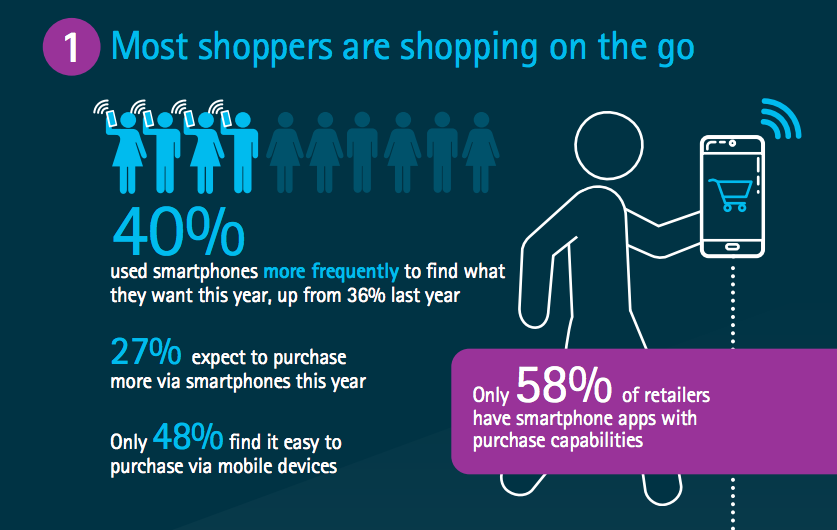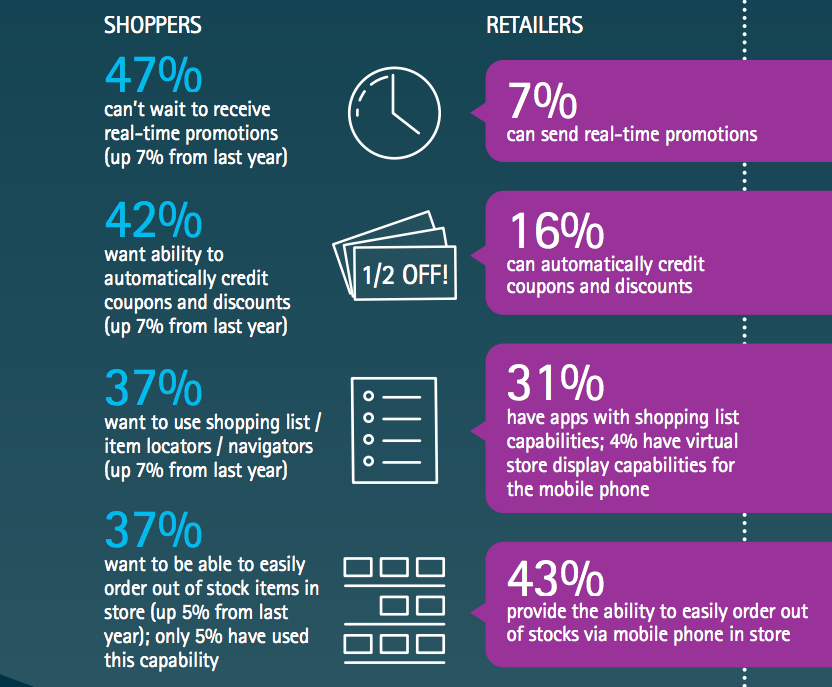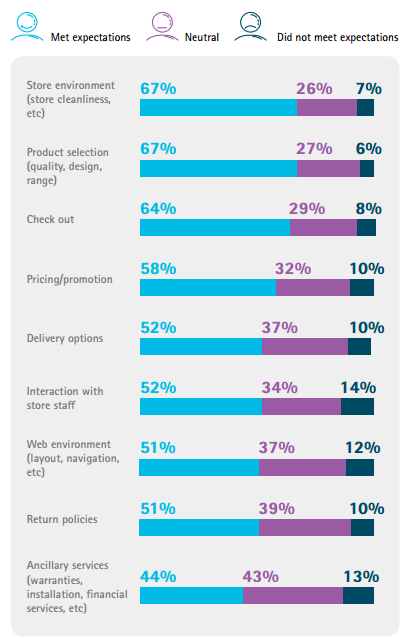A recent report on the shopping behaviour of the internet users worldwide in 2016 by Accenture, stresses on Adaptability, which will become the trademark for successful marketing strategies in future. The soaring e-commerce business is forcing the retailers to acquire proactive measures in order to meet the demands and expectations of the consumers. The main focus of the research is deciphering the needs and wants of the consumers along with the efforts made by the retailers to meet those wants.
The methodology adopted by Accenture, is quite relevant and focuses on two broader segments:
- Consumer Wants: In the era of internet and smartphone consumers are able to make more informed choices. They want to embrace a better shopping experience and expect prompt and faster response to their queries from retailers.
- Retailers Need: As consumers’s have got a fleet of channels, such as social media, mobile and internet, to get connected with brands and representatives, Retailers need to be more attentive and volatile to the customers. The report highlights in such changing equations what are the set of hurdle retailers are facing to improve their relationship with customers.
The findings and actionable insights are derived from the survey responses that involved 13 countries (Canada, Brazil, China, Germany, France, Mexico, Japan, Italy, Sweden, UK, US, South Africa and Spain) and 10,096 customers, who are regular smartphone users and have shopped online or in stores during last 3 months. The survey also reached to 160 retailers, representing a wide variety of consumer products including electronics, grocery, drugs, beauty, apparel etc.
Mobile shopping experience is gradually gaining momentum
Smartphones are the favorites, when it comes to online shopping. 48% shoppers said that smartphone shopping expeirnece is maturing and has an easy shopping form factor. The figure is up by 6 percent point from the last year when only 42% shoppers found smartphone shopping experience quite easy. The report also highlights that, in 2015, 40% global shoppers used their smartphones to track down goods and services.
So, which are the industries that have recorded surge in smartphone shoppers ? Apparel, Footwear, Accessories and Consumer Electronics industries recorded a significant increase in the smartphone shoppers. Nearly one-third of the shoppers of these industries were founds shopping using smartphones in 2015.
The growth of overall mobile shopping could be attributed to the increase of smartphone users globally. According to the latest Ericsson report, there will be 6.1 billion smartphone users while the mobile subscriptions will be totaled to 9.1 billion by 2020.
Considering all above numbers, the main focus of the retailers must be on making their smartphone presence more user-friendly. Ironically, just 58% of the retailers provide smartphone apps with purchase capabilities, while 89% have websites designed for tablets and 93% have smartphone friendly websites. The scenario is changing from website centric traffic to app-centric traffic, which must be duly noted by the e-commerce vendors.
Catering the growing demands of consumers
It is an established fact that the business health is directly proportional to customer’s satisfaction. Time is the prime witness as over the years many businesses have slumped, mainly due to unsatisfied customers. Low-quality products and bad services breed dissatisfaction among consumers. Despite, there are few factors identified in the study, that are holding consumers back.
Real time promotions are the order of the day but apathy is mere 7% retailers are able to provide this to consumers. The gap between demand and supply can clearly be identified as 47% customers expect real time promotions from retailers.
Humans are wired to grow ecstatic over anything that is either free or has a discount on its prices. Discounts are like silver for a consumer, with 42% of the customers expecting an automatic coupon or a discount credit, while only a tiny 16% of customers are provided these brownie points by the retailers. Ordering out of stock goods is another trend that is setting in, with 37% of the consumers wanting to order out of stock goods, from their smartphones.
37% of the customers desire to use shopping list or the in-store navigator but only 31% retailers’ offer mobile shopping list, while a mere 4% provides virtual smartphone apps to help in maneuvering around the store. This area needs more focus, as it’ll help the consumers to get all their products in one go, without having to hassle through different products.
The huge gap in the demand and the supply, needs to be addressed and new innovations are needed bridge the two. Brand loyalty may be a challenge if these parameters are not met.
To understand consumers’ comfort zones with online shopping, the survey questioned on retailers capabilities by bucketing those in Cool, Neutral and Creepy bucket. The results are quite surprising.
The Tracking Point
Tracking the social media activity by the retailers to make a list of favorable products for a particular customer has got mixed responses from the shoppers. While the youngsters were fine by being tracked, as it’ll broaden the categories and products that they were unaware of earlier, elderly shoppers chided the tracking technique of the retailers and thought it to be very invasive.
A new way of Tracking involves mapping of MAC address of the shoppers’ computer when they connect to the stores WiFi address and even the CCTV camera track their movements inside the shop. It creates maps of the user of what he/she likes and dislikes and accordingly discounts and other perks are offered to the shopper.
The youngsters are keener on providing their personal information to the retailers but given the percentage of people sharing their personal information trust issue arises as 57% of the shoppers in 2015 are more concerned of their personal information compared to 49% of the shoppers in 2014.
Happiness Quotient
The most important aspect of the businesses, especially in the retail business, is to meet the desires of its customers. The factors that determine the satisfaction of customers include the store environment, cleanliness, checkout process and the quality of products. But what the businesses neglect is the manner of the interaction between the staff and the customers, the delivery, the web environment and returns. Lately, Amazon became Numero Uno in UK, in terms of customer satisfaction.
The study also exposes few criticial in-store environmental aspects sewed with customers’ satisfaction:
Credit Goes To Google And Facebook
Lifestyle changing abilities, according to the survey, can be attributed to the top two honchos of the world- Facebook and Google. 57% of the respondents gave credit to Google for influencing their lifestyle, followed by Facebook at 41%. Surprisingly, the other major brands like Amazon, Apple etc. didn’t figure in the list.
Conclusion
Adaptability will be the key to the future success of the, both offline and online retailers. Catering to the customer’s demand and acting towards it is the mantra. The increased leverage, granted by the retailers to its customers, is making them demand more from the retailers.
Greater convenience and customer satisfaction are the key notes for the retailers. The companies need to adapt to the digital changes of the market and as a result, provide them with better and more influential products and services, in order to endure the bond of trust between the customers and themselves.







